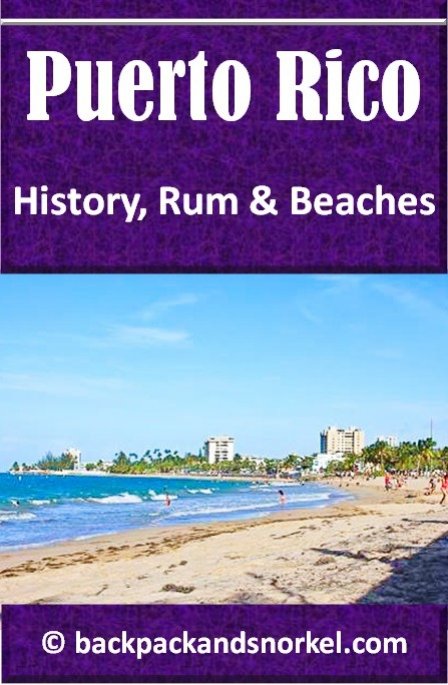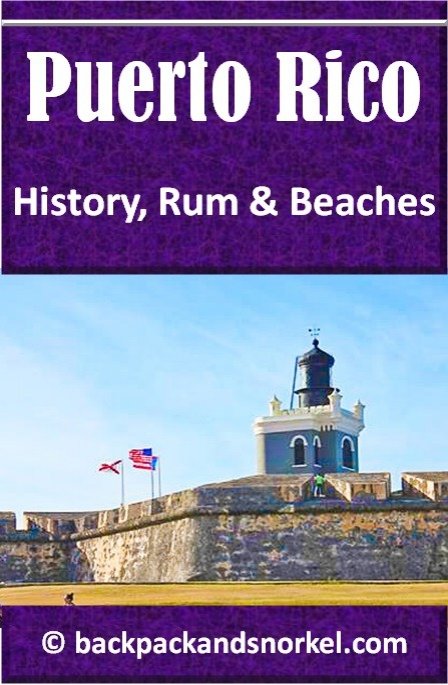Best Things to See and Do in Puerto Rico - Puerto Rico Purple Travel Guide
Puerto Rico is a popular vacation destination and stop on Caribbean cruises. We provide you with detailed information on the best things to see and do, and we show lots of photos so you know what you can expect.
The information on this page and much more (google maps locations, more reviews, website links, etc.) is available in our Cruising the Caribbean Guide.

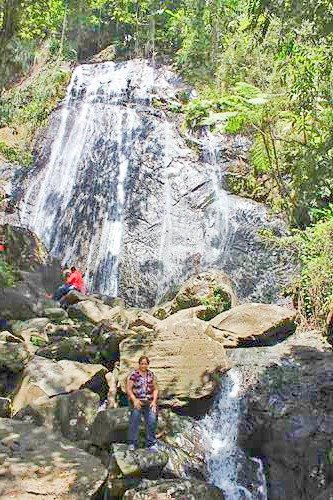
Here at Backpack and Snorkel Travel Guides, we typically promote self-guided walking tours.
But we realize that not everybody likes to walk by themselves in a foreign city. So, just in case that you rather go with ab guide: NO PROBLEM! Please see selection of tours below.
Why you should visit Puerto Rico
Puerto Rico is known for its beautiful beaches, old world architecture, wonderful food, historic forts, flora and fauna and a popular cruise port.
If you come on a cruise, and only have a few hours, then our Puerto Rico Purple Travel Guide will help you decide:
which beach to visit
explore the rich history of the island on a self-guided walking tour of Old San Juan
find which other popular destinations to visit, like Casa Bacardi Puerto Rico
If you are visiting for multiple days, then our Puerto Rico Purple Travel Guide will also help you decide on a hotel and explore placeslike El Yungue Rain Forest, and Bioluminescent Bay.


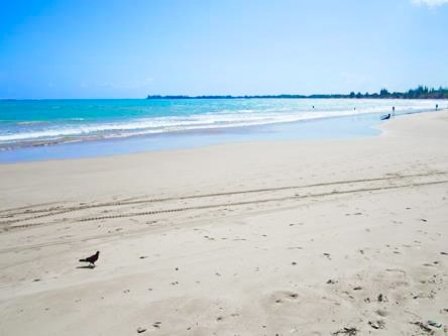

General Information
Puerto Rico (Spanish: Rich Port) is an unincorporated territory of the United States. It is located in the Caribbean Sea, about 1,000 miles (1,600 km) southeast of Miami and consists of the three year-round inhabited islands of Puerto Rico and Vieques and several uninhabited islands and islets with a land mass of 3,420 square miles (8,900 km2).
The population is approx. 3.4mio and the capital is San Juan. The main language is Spanish, but official business is in English and most people will speak some English.
Puerto Rico is home to 239 endemic plants, 16 endemic birds and 39 endemic amphibians & reptiles and hundreds of non-endemic species.
El Yunque is the only tropical rainforest in the United States.
There are three bioluminescent bays in Puerto Rico where microscopic marine organisms glow blue when the water is agitated.
Climate of Puerto Rico
Puerto Rico lies in the hurrican zone and has lately been devastated by multiple hurricanes: In September 2017 Puerto Rico was devastated by major hurricanes Irma and Maria and in August 2019 by major hurricane Dorian causing a widespread humanitarian crisis.
Puerto Rico has a tropical rainforest climate with a rainy season from April to November. The temperature difference between day and night is higher than between the seasons.
Here is the climate that you can expect when you visit Puerto Rico:
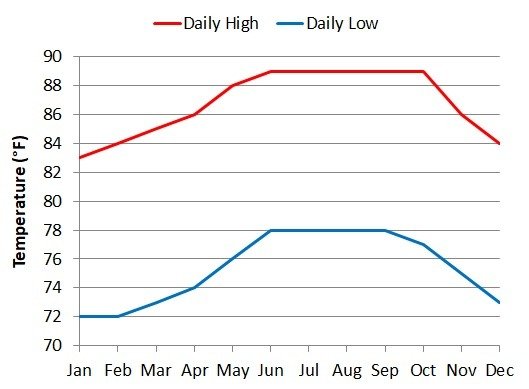
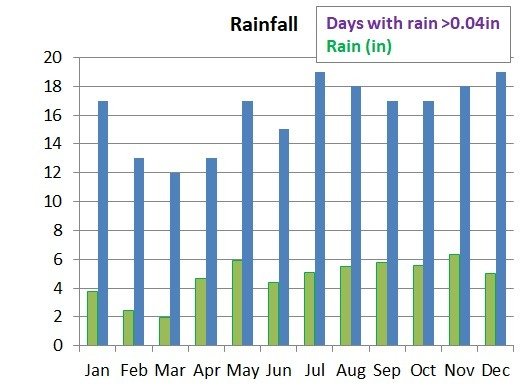
Puerto Rico is recommended as one of the best Caribbean islands to visit in November.
Brief history of Puerto Rico
What is now Puerto Rico, has likely been inhabited since approx. 2000 BC.
Columbus arrived in Puerto Rico on his second voyage on November 19, 1493 named it San Juan Bautista, in honor of St John the Baptist. Spanish colonialization started a few years later.
At the end of the 16th century, the Spanish Empire was weakening and other countries were challenging Spanish territories. To protect San Juan, which was an important harbor for Spanish that brought riches from the new world to Spain, the administration in Puerto Rico started fortifying San Juan with a wall and built the forts of La Fortaleza, Castillo San Felipe del Morro, and Castillo San Cristóbal. San Juan became known as the 'Walled City'.
Besides being challenged by foreign forces and pirates since the 1600s and several independence movements since the 1800s, Puerto Rico stayed under Spanish rule until the Spanish American war. On July 25, 1898, Puerto Rico was invaded by the US and officially came under US control on April 11, 1899 through the Treaty of Paris.
Puerto Rico was first ruled by the military and all officials appointed by the president of the United States.
In 1914, the Puerto Rican House of Delegates voted unanimously for independence from the US, but the U.S. Congress rejected this as 'unconstitutional'.
Three years later, the US Congress passed the Jones–Shafroth Act which granted Puerto Ricans born on or after April 25, 1898, US citizenship, it established that the Senate members and Resident Commissioner could be elected by Puerto Ricans, and it established the bill of rights.
The right to elect their own governor was, however, not established until 1947.
In the 20th and 21st century, there have been several movements to either lead Puerto Rico into its independence or becoming a state of the US. Neither of those movements have been successful so far. But the debate is still going on...
Puerto Rico's cruise port in San Juan has cruises that start and end here and also serves cruises as a stop-over port during their voyage. Cruise passengers that only stop here for a few hours are restricted to the attractions and beaches in San Juan. I advise cruise ship passengers for cruises that start and/or end here to add at least 1 or 2 days before and after the cruise to explore this beautiful island.
Best Beaches in Puerto Rico
Puerto Rico and its smaller islands have hundreds (!) of beaches. Some are fantastic white sand beaches while others are rocky areas with a little sand here and there; some are hidden or difficult to access and some are local favorites that are not being made public.
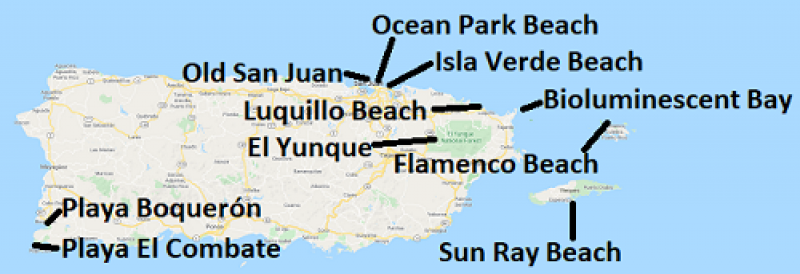
There are so many fantastic beaches that it is simply impossible to rank them. Below is a selection of beaches that are often mentioned:
Ocean Park Beach
Ocean Park Beach is the best beach in San Juan, and nearly as good as many other beaches outside San Juan. You will find golden sand and fewer people than in nearby Conado and Isla Verde.
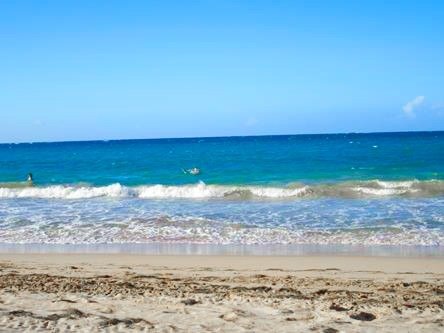
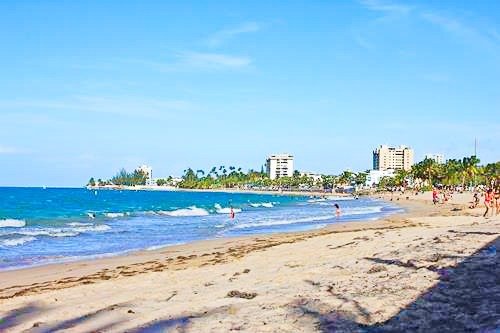
Isla Verde Beach
This is probably Puerto Rico's busiest beach. Contributing to this are the many hotels that line the beach.



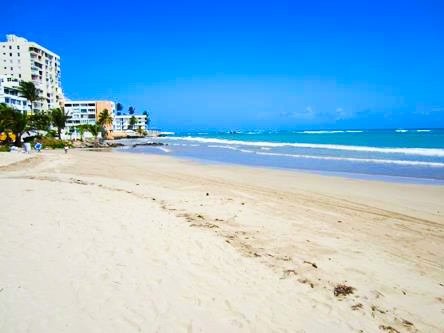
Luquillo Beach
Located 30 miles east of San Juan, this beach has shallow warm waters and good swimming and even life guards, showers, and bathrooms.
Flamenco Beach
Located on the island of Culebra, which can be reached by a 45-minute ferry ride and then a short shuttle bus ride. It was rated third best beach in the world for 2014 by TripAdvisor. Flamenco Beach is a horseshoe of golden sand beach with turquoise waters which has good swimming and snorkeling.
Sun Bay Beach
This is the most polpular beach on Vieques. It has good parking and facilities and features golden sand and turquoise water.
Playa Combate
Puert Rico's longest beach, located in the Cabo Rojo region. It can get very busy here on weekends. It features off-white sand and calm, shallow waters.
Playa Boquerón
Located in the Cabo Rojo region, this palm-tree lined white sand beach has calm waters making it perfect for families and swimming and there is good snorkeling. The beach is state-run and has lifeguards, lockers, bathrooms, showers, food concession and picnic tables and barbecue pits.
Casa Bacardi Puerto Rico
We opted for the Legacy Tour, which is $40 per person at the time of writing, and includes 1 alcoholic mixed drink (you can choose from 3) and, of course, the regular tour. The Rum Tasting tour is $80 per person at the time of writing, and adds a lesson on how to taste rum like a pro.
The tour starts with a very short ride passing a few buildings and a distillation tower. Then you walk into a building where the first room has a nice replica of a courtyard and some old documents (photography OK). Afterwards they bring you to a replica of a small part of their first distillery (no photos allowed) and the tour guide explains the production process to you and you get to smell different types of Bacardi. Then you go to the bar (photos OK) and the tour guide talks about different Bacardi drinks. Last but not least, they bring you to their Bacardi store (photos OK) where you can buy Bacardi merchandise and different types of Bacardi.
From the store you can either take the shuttle or walk back to the starting point of the tour, which will take about 2min.
We found the Bacardi Distillery tour worth the $12 only because of the drink and you get to keep the plastic glass.

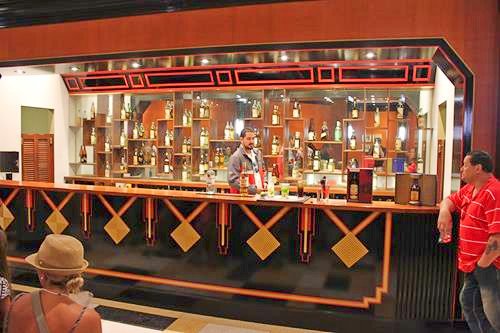
Where to Stay in Puerto Rico
Puerto Rico has no shortage of hotels and Airbnb-type accommodation. Our recommendation is to stay in the middle of it all - in Old San Juan.
Old San Juan is a vibrant, historic, and fairly safe area in San Juan where you can easily walk everywhere.
Just be advised, that driving a car in Old San Juan is difficult, because of many narrow one-way roads. And you will need to pay to park you car in one of the few parking garages.
If you plan to have a rental car for several days, then it may be better to stay outside of the historic center, where parking is easier, and cheaper to find. But you will still need to find parking when you drive to the historic center, unless you hire a taxi or uber.
There map below shows what accommodation is available during your trip:
We liked these hotels:
CasaBlanca Hotel (book)
The CasaBlanca Hotel is located in the heart of historic Old San Juan, just a short walk from the cruise port, El Morro and lots of restaurants. As with everything in this part of town, space comes at a premium. Our room, 5B, was barely bigger than the queen sized bed in it. It had a tiled bathroom with a skylight and boarded up window. The bedroom had 2 small windows with wood shutters that darkened the room nicely.
The A/C was efficient. The hotel does not have an elevator, but you don't need to worry as the hotel personnel will bring up your luggage. The hotel lobby and adjacent hotel restaurant are beautifully furnished in a Casablanca movie inspired style. They even project the movie on a wall in the restaurant. Breakfast was not included in the room rate.
During our stay here, we noticed the following in all the restaurants we visited in San Juan and Old San Juan. Service is slow and food preparation takes a long time. On top of that, all restaurants in Old San Juan are pricey – and this is also true for the hotel restaurant. So, bring time and money. But seriously: What do you expect from the main tourist destination in Puerto Rico?
The hotel does not have parking. If you come by car, then you may want to stop in the narrow one-way road in front of the hotel (and block traffic), unload your passengers and then drive around the block to park in one of the big parking garages which, to my surprise, offer reasonably priced daytime and overnight parking rates. We used the red parking garage and beware they only accept cash.
Long story short: Considering the fantastic location of the CasaBlanca Hotel, it is a reasonably priced hotel. The free tourist trolley passes in front of the hotel. If location and a competitive room rate are more important for you than room size and you are fine walking up stairs, then this hotel may be for you. We liked the hotel and would stay there again.
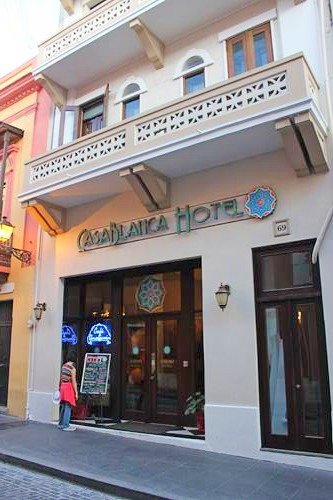
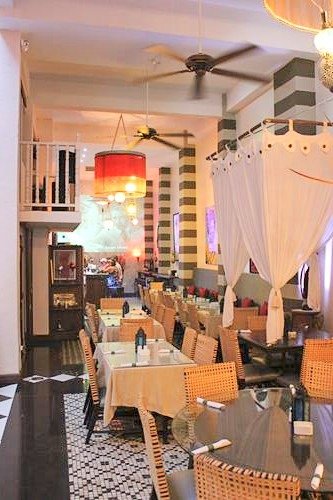
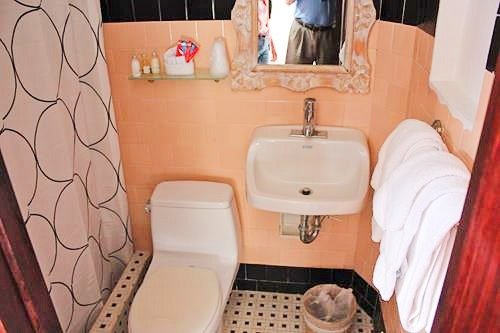
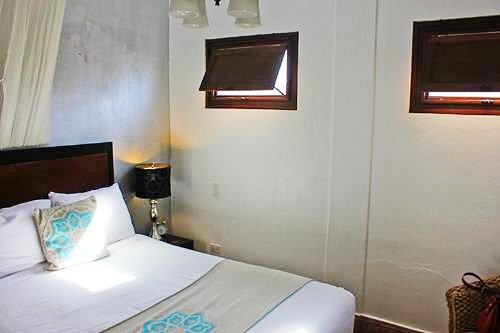
Hampton Inn & Suites San Juan (book)
We stayed in this hotel for only one night before we flew home and did not use all of its amenities. The location is fantastic, it is close to the airport, only a 5 min walk from Isla Verde beach, which is one of the best beaches in San Juan, reasonably priced considering that many of the hotels in this area are much more expensive and it is less than a mile from Verdanza hotel where we rented a car.
Taxis are waiting in front of the hotel and their rates from the cruise terminal are $19 plus $2 per bag and $12 to the airport. This is important as the hotel does not provide a free airport shuttle. The hotel has gated parking and hotel guests pay $10 per night. Across the street are several restaurants and also a casino.
We had room 147 which is quite large, has 2 queen beds and a good sized bathroom. The fan in the bedroom worked well, but the ventilation in the bathroom was inadequate. The A/C was efficient and quiet.
The hotel has a pool with a bar many beach chairs. Towels are provided on a towel rack near the pool. A typical complimentary Hampton Inn breakfast is provided and the front desk staff was friendly. Be aware that the hotel charges a resort fee.
El Yunque Rain Forest
El Yunque is the only tropical rainforest in the US and a bit over an hour drive from the airport. It is definitely worth the trip; admission is $4 per person.
I strongly recommend you watch the film at the visitor center (the 15min English version plays at a quarter to and past the hour). Ask the ranger which hike(s) they recommend as the recent hurrinaces have taken their toll. We decided to hike the La Mina trail which appears to be a very popular trail. The small parking lot at km 10.2 fills up quickly. The trail winds 0.86 miles through the rain forest and ends at a waterfall where you can take a bath, so bring your swimwear. Afterwards, you have to walk the same way back. Yokahu Tower and Mount Britton Tower are definitely worth a visit.
Please be advised that there is significant damage from past hurricanes, and quite a few trails are closed. That leads to other trails seeing more visitors than usual, totally overloading their small parking lots. We have heard from many visitors who received parking tickets for parking outside of designated parking spots.
Unfortunately, the park website is barely ever updated, making it impossible to know which trails are open in advance. It may therefore be a safer bet to join a guided tour to El Yunque - you can find tours below the photos.
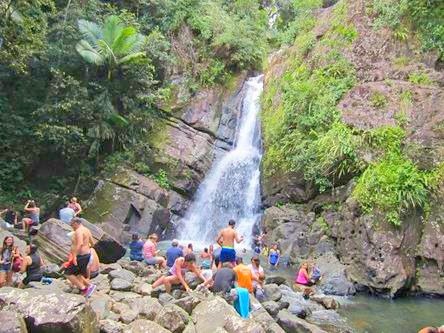



Bioluminescent Bay
This tour, organized by BioIsland, was one of the highlights of our vacation. As they are located at the eastern end of the island, I would suggest you use your GPS for directions; the description on their website was inadequate. If you have a rental car, make sure to have Fast Pass activated as you cannot pay cash at some of the toll stations. Make sure to eat dinner before you go on the tour as the snacks they talk about on their website are just that...snacks and they prevent no one from starving.
Their motor boat goes through the same canal and to the same lake as the kayak tours do. But since their motor boat is faster, you will spend more time enjoying the ghostly glow on the lake.
The bioluminescense here can be opbserved all year. Our tour guides were very knowledgeable and gave us some great explanations of the flora and fauna and the bioluminescence phenomenon. On the way back, they pointed out numerous iguanas in the mangrove trees. The iguanas have their favorite hangout spots where they stay every evening.
As to the bioluminescence: we had mostly clear skies and some residual lights from the moon and nearby settlements and the festival area where the boat dock is located. This light did not limit the viewing experience at all. The glow could easily be seen, but it is extremely difficult to photograph it. It was either a ghostly bluish glow of at one spot a bluish sparkling. Fish that swam away from the boat left bluish trails in the water. Holding your hands or feet in the water, using the supplied sticks or splashing water will get you some great glowing effects. Towards the end of the trip, one of the guides offered to adjust our cameras (only works with DSLR cameras) so that we could take photos. I wish he had done it when we got to the lake.


Author: Rudy at Backpack and Snorkel
Bio: Owner of Backpack and Snorkel Travel Guides. We create in-depth guides to help you plan unforgettable vacations around the world.
Other popular Purple Travel Guides you may be interested in:
Like this Backpack and Snorkel Purple Travel Guide? Pin these for later:


